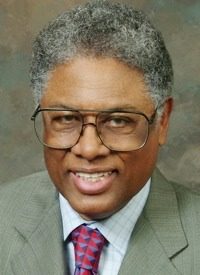
The American economy usually rebounds a lot faster than it is doing today. After a recession passes, consumers usually increase their spending. And when businesses see demand picking up, they usually start hiring workers to produce the additional output required to meet that demand.
Some very sharp downturns in the American economy, such as in the early 1920s, were followed quickly by bouncing back to normal levels or beyond. The government did nothing — and it worked.
In that sense, this is an unusual recovery in how long it is taking and in how slowly the economy is growing — while the government is doing virtually everything imaginable.
Government intervention may look good to the media but its actual track record — both today and in the 1930s — is far worse than the track record of letting the economy recover on its own.
Americans today are alarmed that unemployment has stayed around 9 percent for so long. But such unemployment rates have been common for years in Western European welfare states that have followed policies similar to policies being followed currently by the Obama administration.
Those European welfare states have not only used the taxpayers’ money to hand out “free” benefits to particular groups, they have mandated that employers do the same. Faced with higher labor costs, employers have hired less labor.
The vast uncertainties created by ObamaCare create a special problem. If employers knew that ObamaCare would add $1,000 to their costs of hiring an employee, then they could simply reduce the salaries they offer by $1,000 and start hiring.
But, since it will take years to create all the regulations required to carry out ObamaCare, employers today don’t know whether the ObamaCare costs that will hit them down the road will be $500 per employee or $5,000 per employee. Even businesses that have record amounts of cash on hand are reluctant to gamble it by expanding their hiring under these conditions.
Many businesses work their existing employees overtime or hire temporary workers, rather than get stuck with unknown and unknowable costs for expanding their permanent work force.
As unusual as 9 percent unemployment rates may seem to the current generation of Americans, unemployment rates stayed in double digits for months and years on end during the 1930s. Franklin D. Roosevelt’s administration followed policies very similar to those of the Obama administration today. He also got away with it politically by blaming his predecessor.
To find out more about Thomas Sowell and read features by other Creators Syndicate columnists and cartoonists, visit the Creators Syndicate Web page at www.creators.com. Thomas Sowell is a senior fellow at the Hoover Institution, Stanford University, Stanford, CA 94305. His website is www.tsowell.com.
COPYRIGHT 2011 CREATORS.COM


